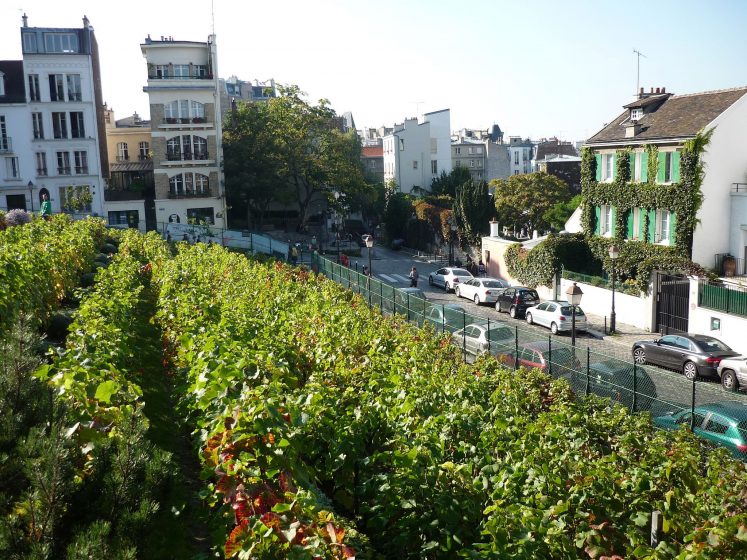The Only Guide for City Blooming
The Only Guide for City Blooming
Blog Article
City Blooming - The Facts
Table of ContentsCity Blooming Fundamentals ExplainedExamine This Report about City BloomingThe Best Strategy To Use For City BloomingCity Blooming - An OverviewRumored Buzz on City Blooming
Fascinated in growing food for sale in the City of Chicago? Below is a listing of frequently asked concerns relating to the guidelines and guidelines that growers need to think about when planning a city farming task.
The zoning modification does not customize any type of various other codes taking care of composting, structure permits, purchasing or leasing City possessed residential or commercial property, company licenses or ecological contamination. There are existing codes that manage these concerns and they stay in complete effect and may be suitable to your project. Neighborhood yards are typically had or handled by public entities, public companies or community-based companies and preserved by volunteers.
Urban ranches expand food that is meant to be marketed, either on a not-for-profit or for-profit basis. Due to their commercial purpose, urban ranches require a business permit.
City Blooming - Questions
Composting is allowed yet only for plant product that is created and utilized on site. The quantity of garden compost material can not surpass 25 cubic lawns at any provided time according to the criteria in 7-28-715 of the City's Municipal Code. Yes. Due to the fact that the dirt at many new yard sites requires amending, garden compost, soil, timber chips, or various other products can be obtained to construct or enhance the growing area - fruit and vegtables.

If a structure license is called for after that the hoophouse will certainly be thought about an accessory building. You can figure out more regarding the building authorization needs by calling the Division of Buildings. The 25,000-square-foot size limitation is meant to avoid a single community yard from dominating a provided block or interfering with the block's existing household or industrial personality.
The limitation does not use to yards found in Public Open Space (POS) districts. Can there be more than one community garden that is 25,000 square feet on a single block? Fence is not needed, nonetheless, yards that have big vehicle parking areas may be required to set up fencing or other landscape design attributes.
Some Ideas on City Blooming You Need To Know
B1 & B2 districts require that all business use tasks be conducted inside your home. R areas limit industrial activity. The guidelines mirror the purpose and intent of the Zoning Code. Is fencing needed for city ranches? Yes. Fences may be called for, along with landscaping and screening, for sure parking lot and exterior work or storage areas depending upon place and the specific activity taking area.
Yes. Urban farms call for structure authorizations and zoning approvals prior to construction. Other forms of city evaluation may be required depending upon certain structures, tasks, size, landscape look these up design, licensing, public heath and stormwater management issues. Much of these needs are determined in the task design or permitting procedure, however, the applicant may be responsible to individually determine specific licenses or permits that might be called for.
Yes. The sort of permit is figured out by what is occurring at the site. The Division of Company Affairs and Customer Security can assist figure out the particular kind of service certificate that's called for. Yes. Off road parking is needed for the majority of business tasks in Chicago. The needed variety of car park areas is based upon the variety of staff members working with site and not the square video of the expanding room.
5 Simple Techniques For City Blooming

A city farm can market compost product generated on site, nonetheless, the procedure must comply with the guidelines in 7-28-715 of the Chicago Municipal Code. Aquaponic systems are permitted indoors on urban ranches in several zoning areas.
As much as five hives or nests of honey might be maintained as an accessory usage. Beekeepers should sign up with the Illinois Department of Agriculture. For more details about the recommended zoning modification you might contact the Department of Real Estate and Economic Development, Bureau of Planning and Zoning at 312.744.8563.
Farming in cities and urban locations A metropolitan farm in Chicago. Urban agriculture refers to numerous techniques of growing. https://cityblooming.bandcamp.com/album/city-blooming, handling, and distributing food in city locations. The term likewise puts on the area activities of pet husbandry, tank farming, beekeeping, and gardening in a metropolitan context. Urban agriculture is differentiated from peri-urban agriculture, which occurs in country areas at the edge of suburbs.
The smart Trick of City Blooming That Nobody is Talking About
, who look for to create social networks founded on a shared ethos of nature and neighborhood holism. These networks can develop by means of official institutional assistance, coming to be integrated into regional town preparation as a "change community" activity for sustainable city development.
Some of the first evidence of metropolitan agriculture comes from Mesopotamia.
Report this page